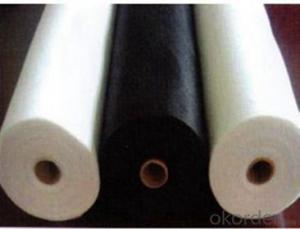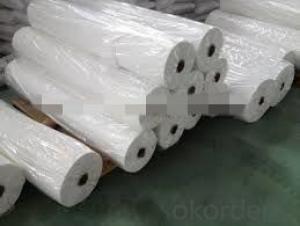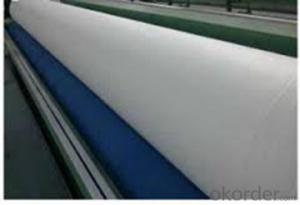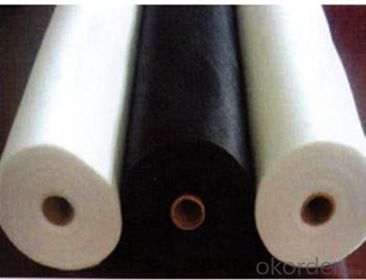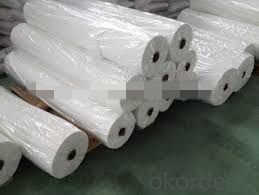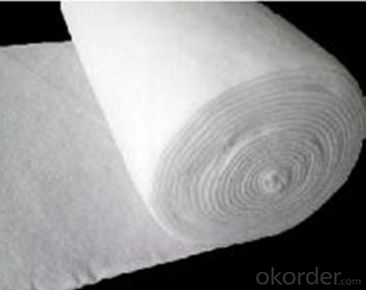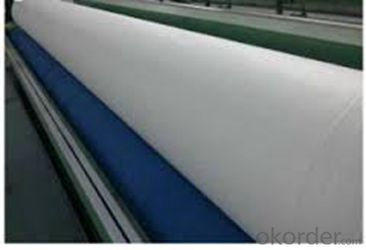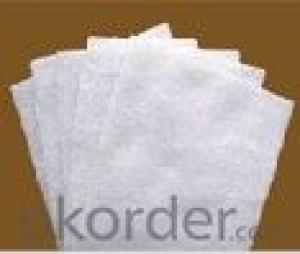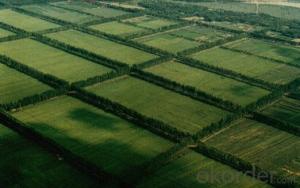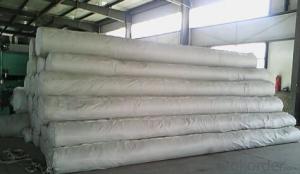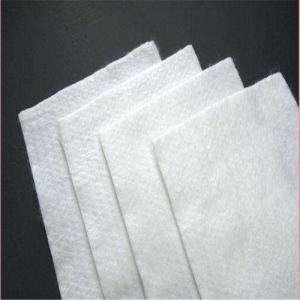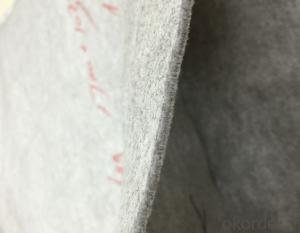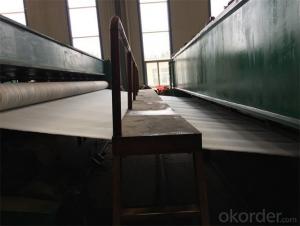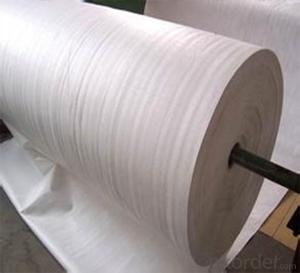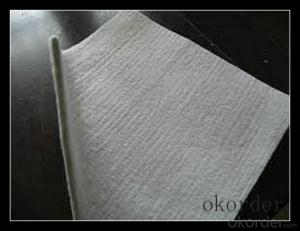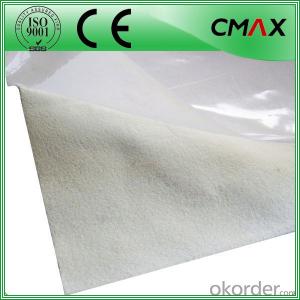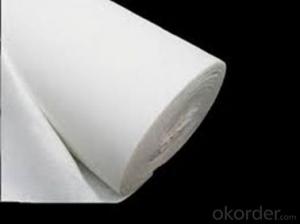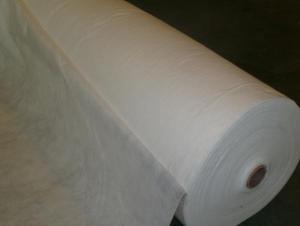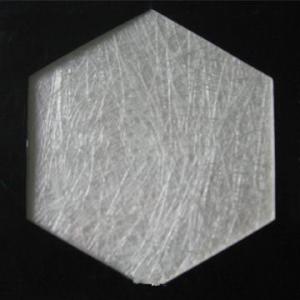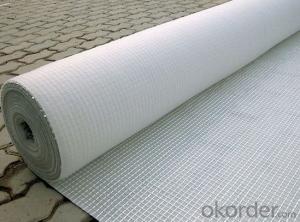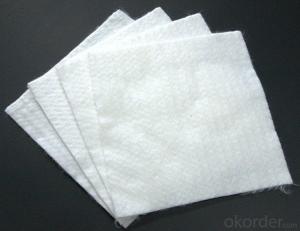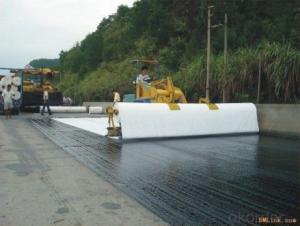Geotextile Fabric Bunnings 100% Polyester Filament Non-Woven Geotextile Fabric from CNBM
- Loading Port:
- China main port
- Payment Terms:
- TT OR LC
- Min Order Qty:
- 4000 m²
- Supply Capability:
- 1000000 m²/month
OKorder Service Pledge
OKorder Financial Service
You Might Also Like
Specification
Product Introduction
3. Geotextile Applications
1) Filtration :
The filtration layer of the dykes, river canal, seacoast, concrete slope, retaining walls. At the same time of preventing the clay granule from passing, it allows the water and the gas pass through freely.
2) Separation :
The isolation of the railway dregs and the roadbed, roadbed and the soft base, surface of the airdrome and parking lot and the groundsill, different dam materials. It isolates the soil and the gravel of two kinds different granule pathway from the groundsill or other buildings.
1. Specifications
1) Weight / Mass: 100g/m2-800g/m2
2) Width: Within 8 m (1m-8m)
3) Length: 50m-100m/roll (as request)
4) Material: PET
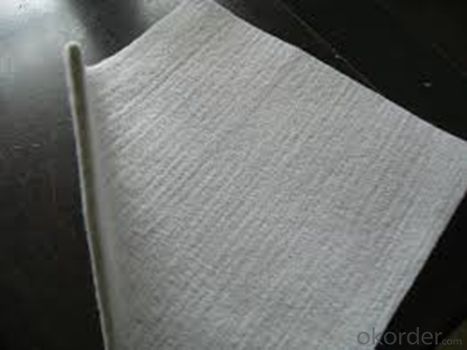
Our Service
Quality assurance
1.On a regular basis or as per your request,we entrust national testing agencies to conduct quality inspections
2. Strictly in accordance with the ISO9001-2008 international quality system standard,we monitor and manage the whole process throughout production,quality testing,and measurement to ensure product quality
3. For quality-related construction delay or substandard construction(except for damage or losses due to customer’s responsibility or irresistible natural disasters),we have refunding,replacement,and repair services.We will respond to customers’ feedbacks on quality issues within 24 hours.
After-sales service
1.In order to provide customers with comprehensive technical support,we will provide technical and other related information upon request in a timely manner.
2.In required,we will appoint specialized technicians to the construction site to give technical trainings to construction people,and offer technical guidance throughout the whole construction process.
3.For damage due to shipment and delivery,after we receive the complaint,we will check the issure through provided pictures and videos.If our responsibility is confirmed,we wil offer free replacement.
4.When the construction is completed,as your request,our technical staff may participate in the final acceptance.
FAQ:
Q: What kind of payments does jenor support?
A: T/T, L/C, Cash are accepted.
Q: Do you charge for the samples?
A: Accordeing to our company policy, the samples are free, we only charge the freight fee. And we will return the freight fee during the next order.
Q: Can you produce according to customers' design?
A: Sure, we are professional manufacturer, OEM and ODM are both welcome.
Q: Do you have other products?
A: Yes, please check the pictures:
Packaging & Shipping
Packing: PLASTIC FILM INSIDE, AND WOVEN BAG OUTSIDE
Shipping: About 15 days after receipt the deposit
- Q: How do geotextiles help in reducing the risk of landslides?
- Geotextiles help in reducing the risk of landslides by providing reinforcement and stabilization to soil slopes. They are placed within the ground to act as a barrier, preventing the movement of soil and reducing erosion. Geotextiles also improve drainage and promote the proper flow of water, reducing the build-up of excess moisture that can contribute to landslides. Overall, geotextiles play a crucial role in enhancing the stability and resilience of slopes, mitigating the risk of landslides.
- Q: Can geotextiles be used in landscaping projects?
- Yes, geotextiles can be used in landscaping projects. Geotextiles are commonly used to control soil erosion, separate different soil layers, and stabilize slopes. They can also help with weed control and provide drainage in landscaping projects.
- Q: How do geotextiles affect soil nutrient availability?
- Geotextiles can have both positive and negative effects on soil nutrient availability. On one hand, geotextiles can help retain nutrients in the soil by preventing their leaching and runoff, thus promoting their availability for plant uptake. On the other hand, if geotextiles are impermeable to water and air, they can hinder nutrient exchange processes and microbial activity, ultimately reducing nutrient availability in the soil. Therefore, the impact of geotextiles on soil nutrient availability depends on their design and application.
- Q: What are the factors to consider when selecting geotextiles for mining applications?
- When selecting geotextiles for mining applications, factors to consider include the type and size of particles being contained or separated, the required strength and durability of the geotextile, the level of permeability needed, the potential for chemical or biological degradation, and the site-specific conditions such as slope stability and groundwater levels. Additionally, the cost-effectiveness and ease of installation should also be taken into account.
- Q: How do geotextiles affect air quality?
- Geotextiles do not directly impact air quality as they are primarily used for soil reinforcement, filtration, and drainage purposes in construction and landscaping projects. However, their use can indirectly contribute to better air quality by reducing soil erosion, preventing the release of dust particles into the air, and improving overall environmental sustainability.
- Q: Are geotextiles suitable for use in erosion control mats for revegetation?
- Yes, geotextiles are suitable for use in erosion control mats for revegetation. Geotextiles are designed to prevent soil erosion by stabilizing the soil and promoting vegetation growth. They provide a protective layer that allows water to pass through while retaining soil particles, which helps to reduce erosion. Additionally, geotextiles facilitate the establishment of vegetation by providing a favorable environment for root development. Overall, geotextiles are an effective solution for erosion control in revegetation projects.
- Q: Do you have to have a mattress on the geotextile?
- 1, geotextile must be washed back to fill or sand protective layer and light compaction to prevent the subsequent construction of the destruction of geotextile, punctured and so on. But also a transition zone, to ease the upper load on the geotextile extrusion, tensile force and so on. 2, "Geotextile Construction Code QB / SNGSG-2004" and "Geosynthetics Application Technical Specifications GB / T-2017" backfill requirements: 1) timely backfill materials, backfill stone maximum drop of not more than 300mm, Heavy earth stones should not roll on the slope of the rolling; 2) fill the compaction should meet the design requirements, backfill 300mm loose layer, light compaction. 3, geotextile introduction: 1), geotextile by synthetic fiber through acupuncture or weaving made of permeable geosynthetics. Finished cloth for the cloth, the general width of 4-6 meters, the length of 50-100 meters. Geotextile is divided into a woven geotextile and non-woven geotextile. Advantages: geotextile with excellent filtration, drainage, isolation, reinforcement, anti-seepage, protection, with a light weight, high tensile strength, good permeability, high temperature, resistance to Freezing, anti-aging, corrosion-resistant advantages. 2), Disadvantages: in the rigid base waterproof requirements are not applicable (tensile rate does not meet the requirements), easy to break, scratches and so on.
- Q: What are the limitations of using geotextiles?
- Some limitations of using geotextiles include their susceptibility to clogging, reduced effectiveness in high-flow conditions, potential for damage during installation or handling, limited ability to withstand heavy loads, and relatively short lifespan compared to other geosynthetic materials. Additionally, geotextiles may not be suitable for all soil types or environmental conditions, and their performance can vary depending on factors such as installation technique and maintenance.
- Q: 1 square of non-woven geotextiles how many tons
- Do you ask how many grams / square of non-woven geotextiles how much a ton? At present, the price of geotextile is subject to fluctuations in the impact of raw materials, the specific price needs to be priced seven days before the purchase. Geotextile manufacturers in the Swiss Zhang Ming Chao answer for you.
- Q: What causes the geotextile aging phenomenon
- Gundam has the characteristics of the product we are all obvious, both in the highway, dams, railways and many other occasions have a very strong product features, and the performance is very outstanding, geotextile is an irreplaceable geotechnical material. Although the geotextile has unparalleled advantages, but the product is not perfect that any product has more or less problems or less, geotextile is the same, its aging problem has been with us, then in the end what causes Geotextile aging? Geotextile aging problem refers to the geotextile in the sun by the smell, temperature changes, biological erosion, chemical corrosion, moisture and other external factors, so that the geotextile strength and performance gradually weakened, loss of seepage effect. UV radiation intensity changes with the intensity of solar radiation, geotextile aging speed with the intensity of UV radiation and speed. Synthetic polymer polymer is concerned, the sun radiation is the main factor in the degradation of polymer degradation. UV radiation in the sun is the most important factor in the aging of the fabric. The ultraviolet radiation causes the polymer to produce a photooxidative decomposition reaction, especially ultraviolet light at a wavelength of 290 to 400 mPm, which has a significant decomposition effect on the polymer , Because the geotextile in the range of ultraviolet light energy is higher than the polymer chemical steamed broken the required energy, so the polymer material aging is very obvious.
Send your message to us
Geotextile Fabric Bunnings 100% Polyester Filament Non-Woven Geotextile Fabric from CNBM
- Loading Port:
- China main port
- Payment Terms:
- TT OR LC
- Min Order Qty:
- 4000 m²
- Supply Capability:
- 1000000 m²/month
OKorder Service Pledge
OKorder Financial Service
Similar products
Hot products
Hot Searches
Related keywords
